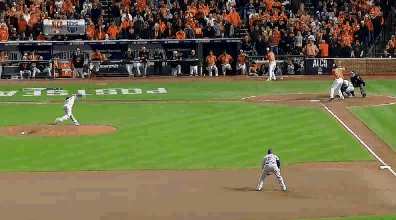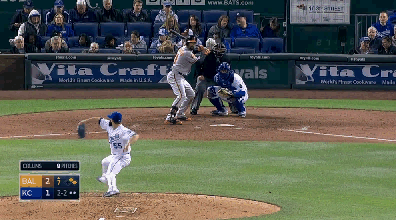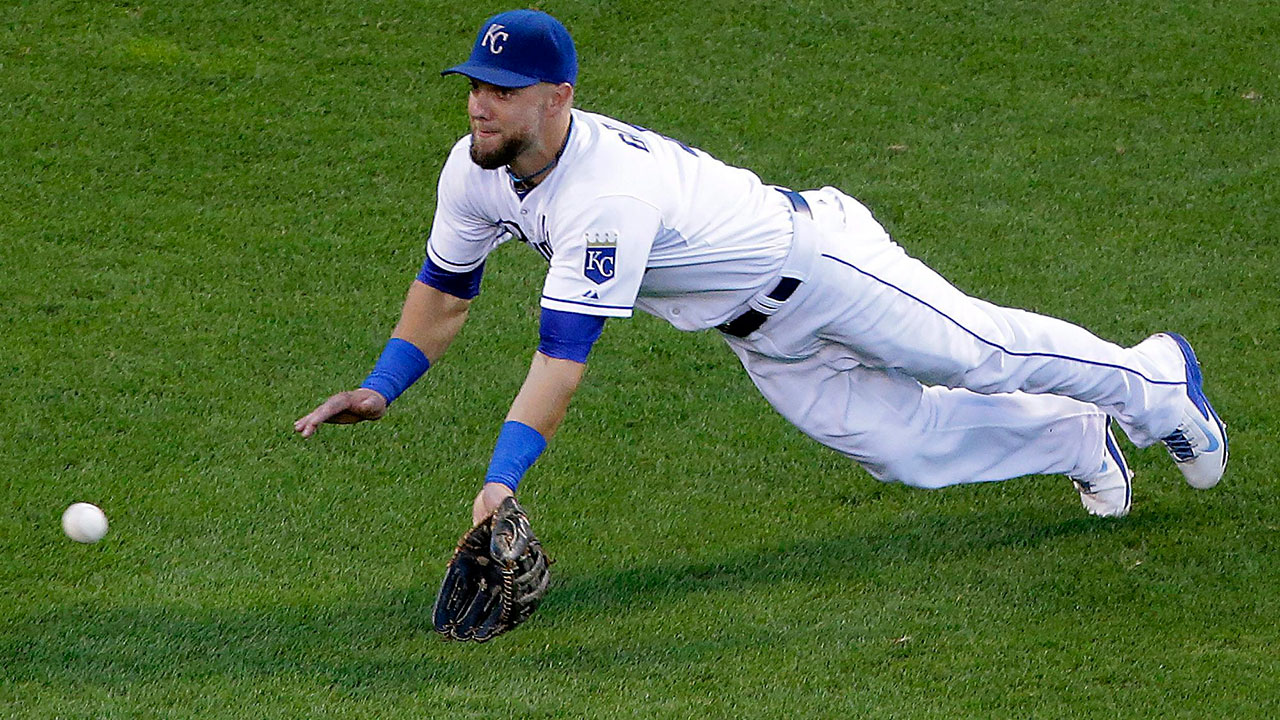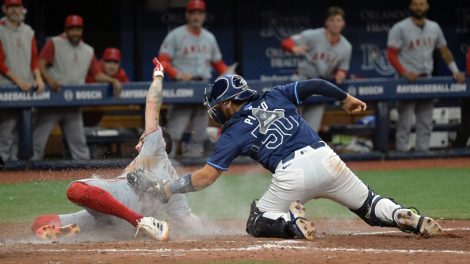
Editor’s note: FanGraphs is a leader in baseball analytics — a must read resource for fans and MLB teams alike. We’re thrilled to publish FanGraphs articles regularly at Sportsnet.
Three and a half months ago, I wrote about Alex Gordon‘s arm. Among regular outfielders, Gordon has one of the very best throwing arms in baseball, and that’s allowed him to pile up valuable runner-killing assists. Toward the end of June, I noticed that Gordon’s assists were down, but that his arm rating was still up high. The reason: deterrence. To that point, nobody had really been willing to challenge Gordon. While he was creating fewer outs, he was saving a ton of bases, and the value there is very much real.
Now, deterrence is a difficult thing to observe in real-time. Good speed, you can observe on a lot of plays. The same goes for good instincts and route-running, and on a decently frequent basis you can see a guy’s throwing arm at work. But deterrence requires certain circumstances, and you have to be looking for it. At the end of the season, I don’t think you have a “feel” for which outfielders deter runners the most, like you might have a feel for other things. But if you want to talk about Gordon, then we can just talk about Saturday. Because Alex Gordon stopped a runner from attempting to score, late in a 4-4 game.
PROGRAMMING NOTE: Watch the LCS on Sportsnet Tuesday starting at 4 p.m. EST.
Let me note, for the second time this month, that Sam Miller also touched on this, and he’s great and his stuff is great. Read great Sam’s great stuff! But I can’t let Sam deter me from writing up articles of my own, because I have to do this for my job. Deterrence theme. All right.
So the Orioles and Royals were playing, and it was the bottom of the seventh. Nick Markakis led off and reached on a weird error, then he got pushed to second by a walk. After Adam Jones struck out, Nelson Cruz came up, and he knocked the first pitch he saw into left field, for a base hit.
As Markakis stepped on third, the Orioles’ win expectancy rose to 74 percent, and then that’s where Markakis would stop. With one out and the score tied, the Orioles settled for loading the bases.

TBS also showed two other replays, so I, in turn, will show you two other replays:


The stop sign was up even before the ball arrived at Alex Gordon’s charging glove. The Orioles were going to take no chances. If you look at Sam Miller’s piece, he found a similar single by Cruz from earlier in the season, and Markakis was able to score from second on the hit without even drawing a throw. There would be no such gamble in Game 2′s seventh inning — third-base coach Bobby Dickerson wasn’t feeling it, and he was later backed up by the manager.
“I don’t know if anyone is a more accurate thrower than Gordon,” Showalter said via the Kansas City Star. “Obviously the Gold Glove is warranted, but I think it has a lot to do with what a good thrower he is.”
The runner wasn’t waved around, because the ball had been hit to Alex Gordon. Markakis could’ve scored. Some percentage of the time, Markakis would’ve been safe for the go-ahead run. But Dickerson didn’t want to risk an out, especially with Steve Pearce coming up.
Let’s apply some simple win-expectancy math. With one out and the bases loaded, the Orioles’ win expectancy was about 74 percent. If Markakis goes and is safe, that would go north of 82 percent. If Markakis goes and is out, it drops to 58 percent. So you get a break-even rate of about 65 percent — to justify waving Markakis around, Dickerson would’ve had to believe he had about a 65 percent chance of scoring. Lower than that, and there’s too much risk.
Not that Dickerson was thinking about break-even rates as the play was developing. You can’t do that. Dickerson had to evaluate his runner, and he had to evaluate the would-be thrower. Perhaps Dickerson remembered this play, from last May, with J.J. Hardy trying to score:

That time, Dickerson gave Hardy the wave. That time, Gordon unleashed an absolutely perfect throw to gun Hardy down at home plate without incident. If you’ve been burned once, you’re disinclined to be burned again by the same play. Markakis isn’t a great sprinter, but what presumably stopped a scoring attempt in its tracks was Gordon moving in on the baseball. Better to be conservative, Dickerson decided, than to take an aggressive risk in a tied playoff game. It was a decision made on the fly with a home crowd roaring for the hit and a lead.
There was one out at the time. Pearce then lifted a fly to Gordon, but it wasn’t deep enough for Markakis to tag. And then the Royals got the third out, and off they went to the eighth. Markakis could’ve still scored. Gordon didn’t prevent Markakis from ever scoring — he served as a delay. The Orioles could’ve taken the lead in the inning, but they didn’t, and in this way there’s real value in the delay, meaning there’s real value in Gordon’s deterrence. His arm is valuable when he uses it, and in response to that, his arm is valuable without his having to use it.
Let’s re-visit something from June. As a left fielder this season, Gordon had 193 potential throwing opportunities. For example, he fielded 46 singles that were hit to him with a runner on second. Out of those chances, 61 percent of the time, the runner held at third. The league average was 37 percent. Gordon’s overall held rate was 75 percent. The league average was 63 percent. Setting a minimum of 100 opportunities, second place came in at 69 percent. So Gordon’s was a valuable presence in left field, even ignoring his actual throws. And his actual throws were good, too. He finished fifth in assists, despite seldom being challenged.
Back to that 75 percent. With the same 100-opportunity minimum, no left fielder has posted a held rate higher than 75 percent since Barry Bonds‘ 77 percent in 1992. The average has been 63 percent, with a standard deviation of about 4.4 percent, so while this data, like all data, contains noise, Gordon’s season was extreme, and it doesn’t seem like a coincidence.
He’s one of the best throwers in baseball, so that stopped people from challenging him during the year, and that’s stretched into October. With tens of thousands of people pleading for the go-ahead run, Bobby Dickerson threw up the stop sign, because he didn’t want Alex Gordon to make him look like a fool.
And I have to believe he made the right decision. Ultimately the inning didn’t work out, but that’s defence for you. Defence is the Royals’ greatest strength, and sometimes they make that abundantly obvious. Other times, they don’t, but sometimes the very absence of defence is the manifestation of defence. Alex Gordon didn’t stop anything from happening, directly, but in cases like this, threat can serve as a tenth defender.
This article was originally published at FanGraphs on October 13th.









